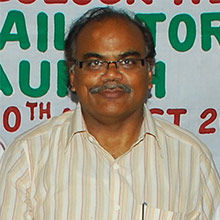By Corporates for Corporates
Summary
National Fibre Policy is a necessity for India. Government has just released a Draft National Fibre Policy (DNFP) in June, 2010,based on the deliberations of eight sub-groups and a 72-member Working Group.
However, pre-policy development process was notrepresentative, while post-draft policy consultations so far are not wideenough. This draft fails to chart new frontiers and new directions. Sectoralstrategies are absent. There is no balanced integration of the concerns ofvarious sub-sectors of Indian textile sector. It is at loggerheads with theclimate change goals of Indian government. There is an over emphasis in this policyto change the ratio between cotton and Man-made fibre (MMF) consumption.
Even though there are 7 aims and objectives, one cannot seespecific recommendations that correspond to each of the objectives. There is nocorrelation between background assessment, objectives, conclusions andrecommendations.
Draft National Fibre Policy selectively widens and narrowsits scope. In the entire document, not even once there is a mention of theNational Textile Policy. It is at variance with other government policies. Draftdocument is a mix of policies, schemes, measures and programmes-a reader has tosearch for the policy recommendations. Structure of the document is not tunedto the requirements of a policy document. However, certain sections are welldrafted, especially by the sub-groups on Speciality Cotton and TechnicalTextiles.
There is no specific, path-breaking recommendation to reducecost of fibre as a raw material. This Policy is focused more on firm-levelcompetitiveness, of Modern Automated Indian Textile Industry (MAITI). DNFP doesnot come up with any new institutional mechanism that has a mandate tointegrate the concerns of all textile fibres.
By linking the Yarn Advisory Board (with expanded mandate)and Inter-Ministerial Board on Organic Cotton, with the concerns of handloomsector, a host of opportunities can be opened up in national and internationaltextile markets.
DNFP fails to pinpoint the communities, who benefit fromthis policy. It has not come up with a coherent strategy, which can address theissues of farmers. Within farmers, while cotton farmers get more attention,other farmers who produce various natural fibres, get a passing mention atbest. Cotton seed (availability, prices and quality) is a major issue for thecotton farmers, which is not addressed with the same attention as given forMMF.
Draft National Fibre Policy is clearly opting forMMF-related growth and as such, it cannot be termed as a fibre neutral policy.This bias needs to be questioned. DNFPs concentration diminishes on fibressuch as silk, jute and wool. It is much more forthcoming with regard to Other Fibres(banana, sisal, etc.).
There is inadequate linkage between the policyrecommendations and financial requirements. Allocations towards farmers, asprimary fibre producers, are not mentioned. The fiscal burden of reducingduties on MMF and subsidizing MMF production has not been mentioned. Impact ofthis policy on the national economy needs to be worked out, especially inrelation to energy investments.
Theauthor is Independent Textile Sector Analyst








Comments